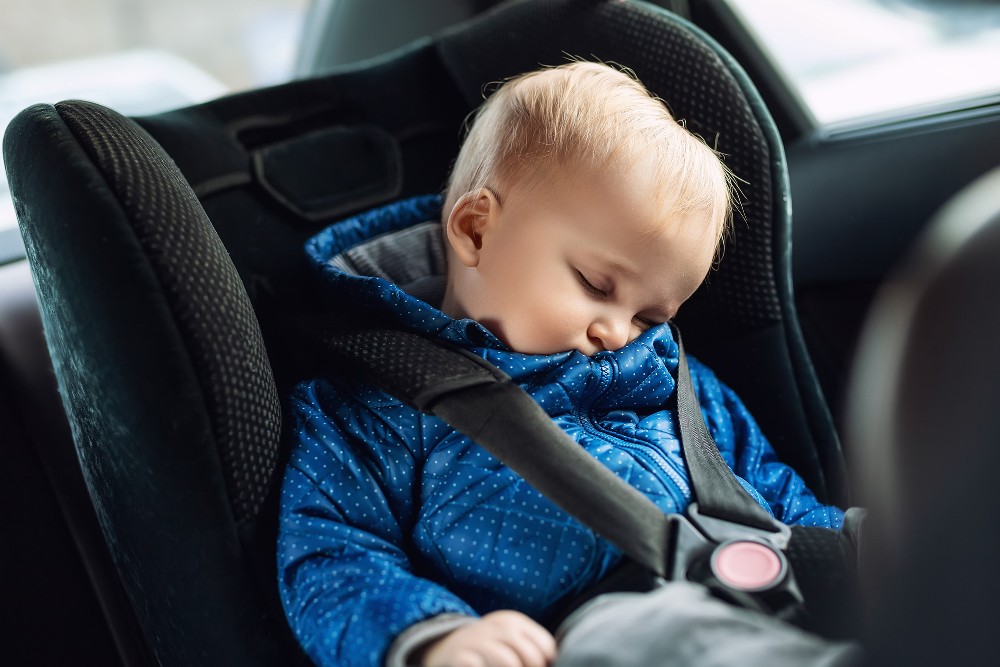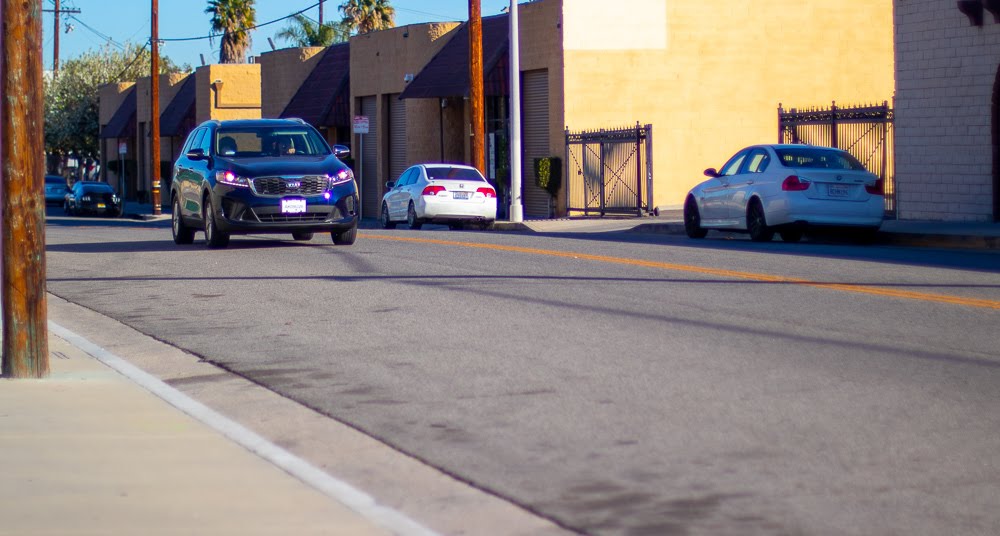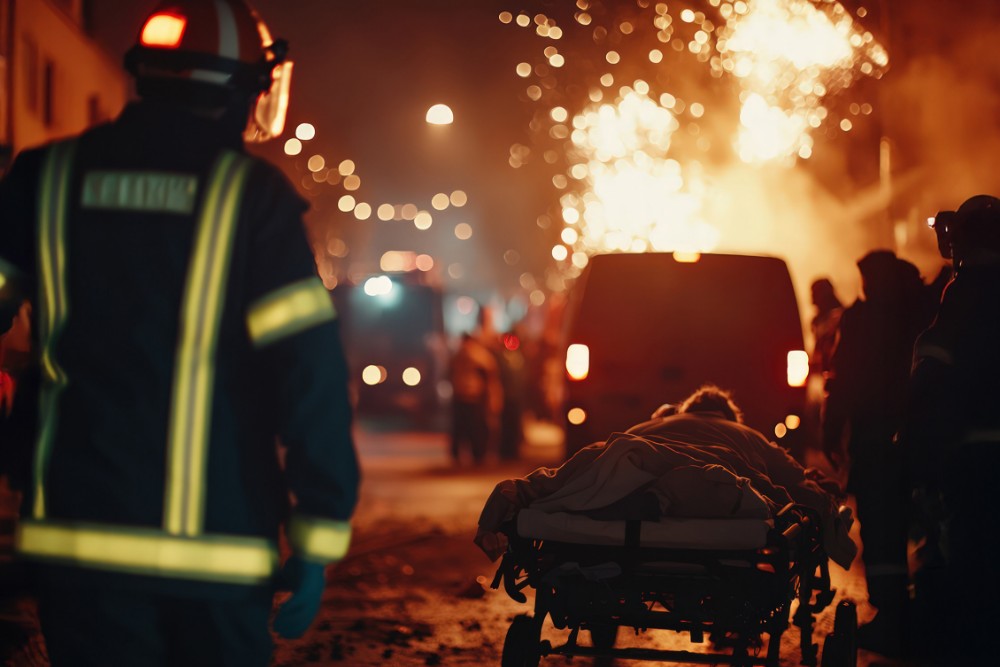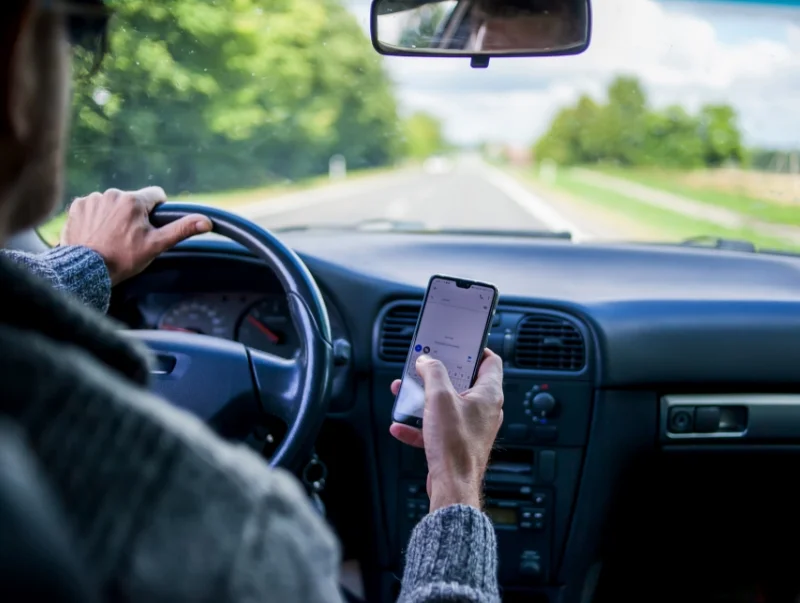As a parent, your child’s safety is your number one priority. But the world is full of hazards, and knowing where to focus your attention isn’t always easy. With years of experience as personal injury attorneys, we’ve found that the old saying “failing to prepare is preparing to fail” holds profoundly true in many child injury cases.
This guide will walk you through the essential preparations to protect your child.
Creating a Secure Home
Your home should be a safe haven, but it’s also where most childhood injuries occur. Fortunately, you can transform it into a secure space where your child can explore and grow, protected from common hazards such as falls, burns, and poisoning.
Preventing Falls, the #1 Nonfatal Injury Risk
It’s easy to dismiss a tumble as a normal part of childhood, but some falls can be severely harmful. In fact, they are the single most common reason for childhood emergency room visits.
The following checklist outlines key steps to maintain a safe environment and significantly reduce the risk of falls:
Actionable Checklist:
- Install hardware-mounted safety gates at the top and bottom of all stairs.
- Secure heavy furniture such as dressers, TVs, and bookshelves to the wall using anti-tip kits.
- Install window guards on upper-floor windows to prevent them from opening more than a few inches.
- Keep floors clear of clutter and use nonslip mats in the bathroom and on other slick surfaces.
Preventing Burns: Kitchen and Household Hot Spots
A serious burn can happen in seconds, and the risk isn’t just from open flames; hot tap water, coffee, and soup are common culprits. The Children’s Safety Network states that fires and burns are a leading cause of unintentional injury-related death for children.
Taking a few simple precautions, such as the ones below, can make all the difference.
Actionable Checklist:
- Set your water heater to a maximum of 120°F (49°C) to prevent scalding. A child can get a third-degree burn in just five seconds from 140°F water.
- Use the back burners on your stove whenever possible and always turn pot handles inward, away from the edge.
- Establish a “kid-free zone” of at least three feet around the stove, oven, and other hot appliances such as space heaters.
- Test your smoke alarms monthly and replace the batteries at least once a year.
Preventing Poisoning and Choking
Some of the biggest dangers in a home are hiding in plain sight. Everyday items such as medications, cleaning supplies, and even certain foods can pose a serious risk to a curious child. Luckily, these hazards are completely avoidable if you follow some simple safety measures:
Actionable Checklist:
- Store all medications, vitamins, cleaning products, and laundry pods in their original containers and in a high, locked cabinet.
- Save the Poison Control number — 1-800-222-1222 — in your phone and post it on your refrigerator or another visible place.
- Cut food for toddlers into small, non-round pieces to prevent choking. Grapes, hot dogs, and nuts should be quartered lengthwise.
- Regularly check floors and low surfaces for small items that a child could swallow, such as coins, button batteries, and loose toy parts.
Safety on the Move: In the Car and Near Water
Once you leave the house, two environments present the highest risk for severe injuries: vehicles and bodies of water. For these situations, there are nonnegotiable safety rules that every parent and caregiver must follow.
Car Seat Safety: Your Child’s Most Important Defense
From our experience representing families after a car accident, we have seen firsthand that a properly used car seat is the single most important factor in preventing serious injury. It is not an area where you can afford to cut corners.
The data backs this up. The Insurance Institute for Highway Safety (IIHS) confirms that restraining children in the back seat “reduces fatal injury risk by about three-quarters for children up to age 3, and almost half for children ages 4 to 8.”
This is why it’s essential to always refer to the manufacturer’s height and weight limits, not just your child’s age.
Child Passenger Safety Stages
| Stage | Child Age/Size (General Guide) | Key Safety Rule | Seating Position |
|---|---|---|---|
| Rear-Facing Seat | Birth until 2–4 years old | Keep your child in a rear-facing seat as long as possible, until they reach the seat’s maximum height or weight limit. | Back seat only |
| Forward-Facing Seat | After outgrowing rear-facing | Use a five-point harness until your child reaches the seat’s maximum height or weight limit. | Back seat only |
| Booster Seat | After outgrowing forward-facing | Use it until the vehicle’s seat belt fits properly (lap belt on thighs, shoulder belt on chest). | Back seat only |
| Seat Belt | After outgrowing booster seat | Children should stay in the back seat until at least age 13. | Back seat (preferred) |
Water Safety: The Rule of Constant Supervision
Drowning can happen so fast that a child may not splash around or cry out at all. The key to prevention is active, undistracted supervision and creating layers of protection.
Layers of Protection (for Pools):
- Fences: A four-sided fence that is at least 4 feet high with a self-closing, self-latching gate is the most effective barrier.
- Alarms: Use alarms on all doors and windows leading to the pool area, and consider an in-pool motion detection alarm.
- Covers: When the pool is not in use, secure it with a rigid, motorized safety cover.
For toddlers and nonswimmers, “touch supervision” is critical. This means a designated adult should be within arm’s reach at all times near any water, including bathtubs, buckets, toilets, and wading pools.
Parents’ Role as Safety Guardian
Ultimately, all these tips come together under one powerful theme: proactive parental involvement. Your presence, your rules, and your preparedness are what truly create a comprehensive safety net for your child.
Model and enforce the use of helmets for biking, skating, and scooter riding. Ensure your child uses the proper protective gear for organized sports. While scraped knees are a part of growing up, some playground injuries are due to poor maintenance or supervision. If you ever face a serious incident and need guidance from a playground accident attorney in NYC, knowing your rights is crucial.
Protecting your child doesn’t mean living in fear or bubble-wrapping everything at home. It’s more about taking thoughtful, consistent, and proactive steps to create a safe world for them. If an accident does happen and you have questions about your family’s rights and legal protections, our compassionate team is here to help. Get the help you deserve — contact our team today.




